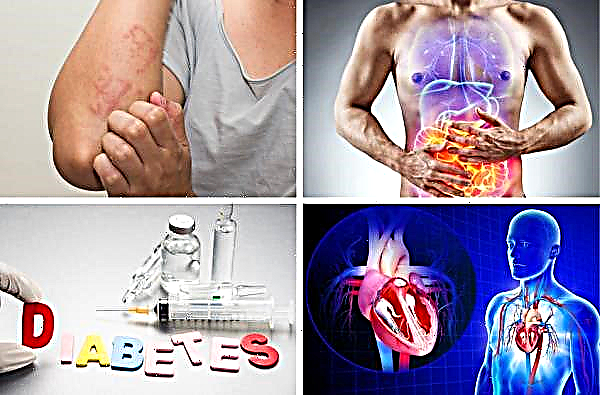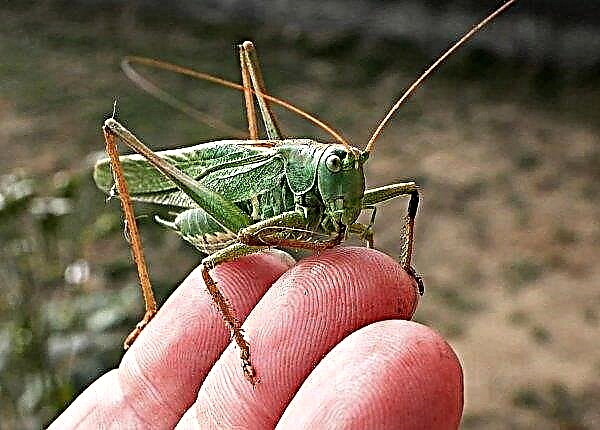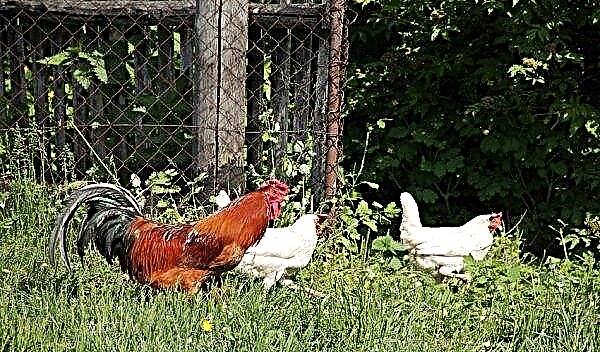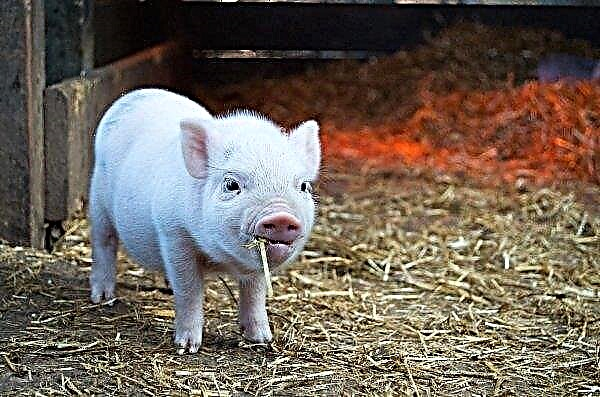Rabies is a fatal illness. To avoid the loss of pets, you must be able to recognize this disease and know the principles of prevention. Let's consider them in more detail.
What is this disease
Rabies, or rabies, is a deadly viral disease of warm-blooded animals. The disease affects the central nervous system.
Did you know? The rabies epidemic periodically wakes up on all continents except Antarctica.
Affected by this ailment:
- wild animals (jackals, foxes, raccoons, bats);
- domestic animals (cats, dogs);
- livestock (sheep, cows, horses);
- people.

How does infection happen?
The causative agent of rabies is the Neuroryctes rabid virus. It is transmitted from a diseased object through saliva, primarily during a bite. It can also be transmitted through feed fed to an infected cow. First, the virus enters the spleen, after which it enters the nerve endings and diverges along them, affecting the nervous system.
In cattle, the incubation period of the disease lasts from two months to one year. The disease may not manifest for a long time - but, having manifested itself, it progresses within 5-6 days.
Forms and Symptoms
If you suspect damage to the nervous system in cattle, pay attention to its behavior.
If you become infected with rabies, the following symptoms may appear:
- Fever.
- Oppressed behavior.
- The cow refuses to feed.
- Dramatic weight loss.
- Periodic cramps, staggering, and muscle cramps.
Did you know? Rabies most often occurs in the winter or spring seasons.
A further manifestation of rabies develops in two directions: there are violent and calm varieties.
Exuberant
During the violent form in a sick animal, the following is observed:
- sudden movements, attempts to break free, to beat against the wall;
- aggressive behavior, increased irritability towards other cows and dogs;
- the cow makes a hoarse roar;
- characteristic shortness of breath and inadequate response to light;
- the cow combs the place of the bite to the wounds, eats inedible (stones, wood).
With paralysis, which is the last stage of the disease, the lower jaw sags in a sick animal, and the muscles of the pharynx and tongue atrophy. Further, the hind limbs cease to function, as a result of which the movement practically ceases.
Calm
Calm or paralytic form is most often observed in cattle. In a calm stage, cows do not show aggression, they are apathetic, lose weight dramatically, and become clogged in a dark place.
The stage of paralysis quickly sets in and the cow's jaw, pharynx and lower part of the croup fail. It becomes difficult to swallow, so the cow refuses to eat.
Important! Pay attention to the pupils: in a sick animal they are dilated.
Diagnostics
The diagnosis can be made by a veterinarian, making sure of the characteristic painful signs of behavior and making a laboratory examination. All animals whose infection is suspected, as well as those that have contacted patients, must be isolated and subsequently referred for examination by a doctor. During diagnosis, high virus levels are found in the cerebral cortex of livestock.
During diagnosis, high virus levels are found in the cerebral cortex of livestock.
Is it possible to cure and what to do with corpses
Unfortunately, the probability of death for a rabies infected person is one hundred percent. This disease is not treatable, so an isolated animal or the whole herd (if there is a suspicion of infection of the rest of the livestock) is killed. Corpses after slaughter are burned, or taken to a laboratory for disposal. The place of keeping sick cattle is disinfected with a solution of caustic soda and formaldehyde. After detection of rabies, quarantine is introduced.
The place of keeping sick cattle is disinfected with a solution of caustic soda and formaldehyde. After detection of rabies, quarantine is introduced.
Another cattle next to the infected is also checked: they isolate it for ten days and look at the symptoms of behavior. If there is no reason to worry about the health of livestock, they will return him to the place of detention again.
Important! Quarantine in the region of infection due to rabies lasts at least two months.
Is it possible to eat meat and drink milk from a sick animal
It is strictly forbidden to eat milk and meat from an infected animal, because this is how the disease can be transmitted to humans.
However, it is worth making a reservation: you can eat cow meat suspected of rabies and vaccinated against rabies. Only a veterinarian can determine this. The same applies to milk - only if the fact of infection is not established, and the cow received the vaccine, you can drink its milk.
Infection of a person from livestock can occur when eating meat from a sick cow that has not undergone the necessary thermal treatment.
Vaccination schedule
Cattle are vaccinated against rabies to prevent and protect livestock from the virus.
- The first vaccine is given to a calf at the age of 6 months.
- The next vaccine is given every 2 years. If rabies quarantine is declared in the region, cattle can be vaccinated earlier.
- The medicine is administered intramuscularly.
- The amount of vaccine in one injection is 1 ml.
- The vaccine should be stored in a dry, warm place. It is not subject to freezing. In case of leakage, the bottle should be rinsed with boiling water and left in boiling water for 5-10 minutes for disinfection.
Important! Only healthy cattle can be inoculated.
Other preventive measures
In addition to vaccination, there are additional ways to control the development of rabies:
- creating a safe environment from the attack of wild animals;
- the destruction of wild animals;
- vaccination of dogs used to protect livestock;
- systematic inoculation of a healthy livestock;
- monitoring the herd suspected of being infected for the early detection of the virus.
 Vaccination is the most reliable way to protect your livestock from a sudden fatal disease. Be sure to consult with your veterinarian about the required dose and frequency of vaccination for livestock in order to be calm about his health.
Vaccination is the most reliable way to protect your livestock from a sudden fatal disease. Be sure to consult with your veterinarian about the required dose and frequency of vaccination for livestock in order to be calm about his health.












